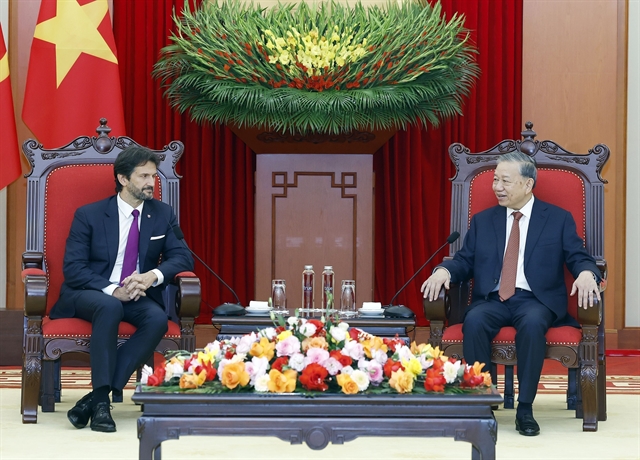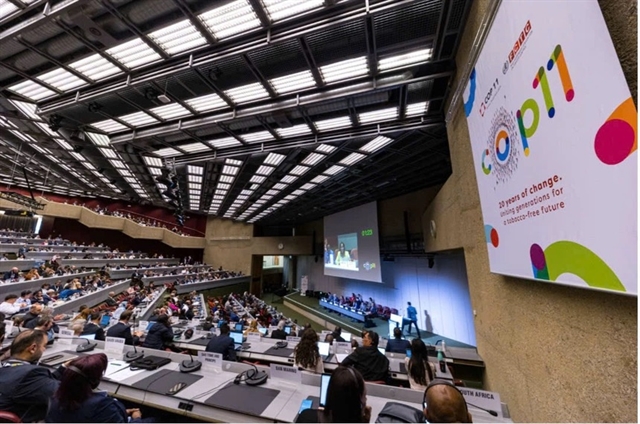 Economy
Economy

" />Vietnamese companies must know how to take advantage of and mitigate the adverse impacts of the Comprehensive and Progressive Agreement for Trans-Pacific Partnership (CPTPP), a seminar heard on Wednesday.
 |
| Local enterprises took part in the “Guidelines to take advantage of C/O regulations in CPTPP” seminar. — VNS Photo Hoàng Nam |
HCM City – Vietnamese companies must know how to take advantage of and mitigate the adverse impacts of the Comprehensive and Progressive Agreement for Trans-Pacific Partnership (CPTPP), a seminar heard on Wednesday.
“Certificate of origin (C/O) is a must to receive tax incentives from CPTPP members and C/O for CPTPP is complicated and totally different from what Việt Nam has done before,” Phạm Bình An, director of the HCM City International Integration Centre, told the seminar, which was titled “Guidelines to take advantage of C/O regulations in CPTPP”.
To support Vietnamese enterprises, the Ministry of Trade has issued Circular 03, which guides them and answers all their questions.
Trịnh Thị Thu Hiền, head of the certificate origin sub-department at the Ministry of Trade’s import – export department, said: “This is a great chance for Vietnamese enterprises to expand their markets and attract more FDI and global supply chains if they can meet the stipulations under the C/O regulation.”
CPTPP allows all production chains, even very minor ones, to get tax incentives, encouraging CPTPP members to increase their investment in other member countries.
Hiền said Việt Nam has signed bilateral free trade agreements with seven members of the CPTPP.
“Local firms can apply for C/O either under FTAs or the CPTPP depending on production level and which one offers lower tax.
“CPTPP is just beginning and tariffs are starting to fall while FTAs have been in effect for a long time and taxes have already been cut.”
She pointed out that a new provision in the CPTPP is that exporters can self-issue C/Os based on information stipulated in the CPTPP.
“If Vietnamese enterprises are ready to spend time to study and prepare for granting C/O themselves, they can get a lot of benefits like saving the time required to go to authorities and the expenditure and getting them any time they need,” An told Việt Nam News.
“However, if they do not strictly follow the guidelines, their products might attract high tariffs and even be returned or banned.”
Asked what enterprises should do about exports between the time the CPTPP came into effect, January 14, and March 8 when the circular comes into effect, he said: “C/Os will be issued with retrospective effect and there will be no problems for exporters.
“For the garment sector, the CPTPP has a separate chapter and garment companies should study it carefully.”
According to the Ministry of Industry and Trade, the CPTPP will have a huge and positive impact on Việt Nam’s investment and trade as a whole, with the garment, footwear, and food and beverage sectors to be the biggest beneficiaries as import tariffs will be eliminated on most of their products.
A recent study by the Ministry of Planning and Investment (MPI) found that the trade deal could add 1.32 and 4.04 per cent to Việt Nam’s GDP and exports by 2035.
“In terms of investment attraction, CPTPP commitments on services and investment will help Việt Nam improve its investment climate and attract more foreign direct investment,” it said.
“In terms of institutional reforms, the CPTPP will help Việt Nam further improve the local business and investment climate.”
Also according to the study, the deal will create an additional 20,000-26,000 jobs annually.
Việt Nam’s deadlines for removing tariffs are later than for other nations. Almost all nations have to reduce tariffs on Vietnamese goods as soon as the deal takes effect, Canada on 94 per cent of tariff lines, Chile on 95 per cent, Japan on 86 per cent, and Mexico on 77 per cent.
But the rate for Vietnam is only 66 per cent, increasing to 86 per cent over the next three years.
MPI statistics show that as of October 20, CPTPP nations had invested well over US$120 billion in Việt Nam, accounting for 35.7 per cent of the country’s total registered FDI. -- VNS




